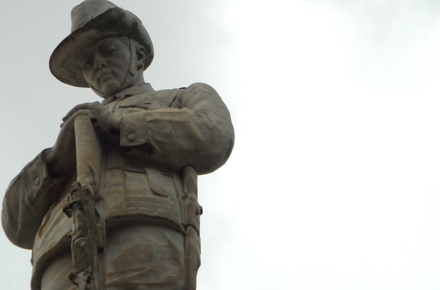War story paints a different Anzac tale
A new book by a military historian in the ANU College of Asia and the Pacific questions the way in which the nation remembers the First World War and ‘our’ Anzacs.
Broken Nation: Australians in the Great War challenges traditional views of World War I, by painting a picture of the war, not just from the perspective of the men who fought in it, but from the home front where the majority of Australians remained.
The book by Professor Joan Beaumont in the Strategic and Defence Studies Centre will be officially launched at the National Museum of Australia in Canberra tomorrow night by former Air Chief Marshall Angus Houston, Chair of the Anzac Centenary Advisory Board and former Chief of the Defence Force.
Speaking before the launch, Professor Beaumont said as we approach the centenary of Anzac, 2015, it was important to rethink the legend.
“The Great War is, for many Australians, the event that defined our nation,” said Professor Beaumont.
“The larrikin diggers, trench warfare, and the landing at Gallipoli have become the stuff of the Anzac ‘legend’ and there is no lack of literature that continuously thrusts these stories to the forefront of our collective memory.
“But, should such a defining national experience be remembered this way? Given that it was the first ‘total war’, in which civilians’ support for the war was as important as morale on the battlefield, why do we not remember also the efforts and sacrifices of the majority? Why have we forgotten the deep divisions that the war produced at home, and the fact that 1914–18 was a time of industrial and political turmoil unrivalled in Australian history?
“If we owe anything to the generation that fought and died in World War I – and the rhetoric of the centenary anniversaries will almost certainly suggest that we do – it is to try and remember the war as they saw it,” she said.
“We may find their values, especially loyalty to the British Empire, incomprehensible, but it was these that made them willing to accept casualties on a scale which today’s democratic Australia would find intolerable.”
To paint a richer picture of the war’s impact on Australia, Professor Beaumont hasn’t just focused on the famous battles and tragic losses of Gallipoli, Pozieres, Fromelles and Villers-Bretonneux.
“The Great War was also a war fought by the families at home. Their resilience in the face of hardship, their stoic acceptance of enormous casualty lists and their belief that their cause was just, made the war effort possible,” said Beaumont.
“In the book I also look at the wider Australian experience of war, from the ferocious debates over conscription to the disillusioning Paris peace conference and the devastating 'Spanish' flu the soldiers brought home.
“We witness the fear and courage of tens of thousands of soldiers, grapple with the strategic nightmares confronting the commanders, and come to understand the impact on Australians at home and at the front of death on an unprecedented scale.”
Broken Nation is available from Allen and Unwin.







